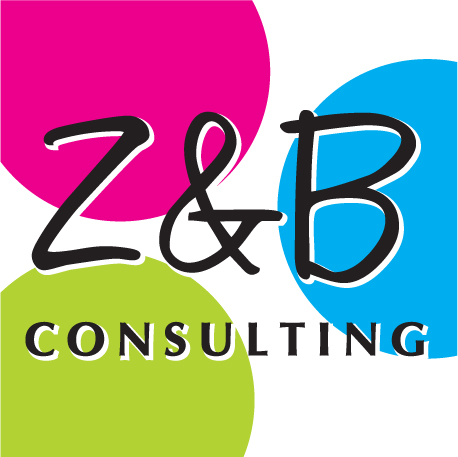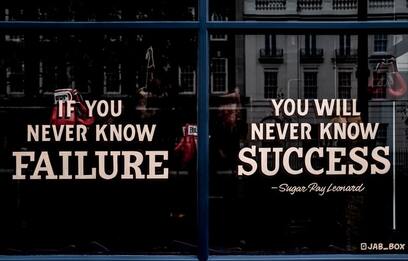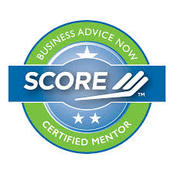|
If you’ve spent any time with a business coach, you’ve probably heard them talk about making sure you regularly do things to move the needle in your business, and it’s true you need to make time for those needle-moving activities, but first you need to know what that means. Once you’re clear on the “move the needle” meaning, then we can talk about what that entails, so let’s start with defining the term. “Move the Needle” MeaningEssentially, the term “move the needle,” when talking about your business, means to do things that will help you grow your business. It could be launching a new product or service. It could be marketing your new (or an existing) product or service. It could be making sales calls, or following up with leads after a networking event. Anything you do to grow your business is a needle-moving activity. While you need to create the product or service you’re selling to your clients, that is not considered a needle-moving activity. That is considered working in your business rather than on your business. That doesn’t mean it’s not important, it just means you can’t only do those activities and expect to grow your business. How to Move the Needle in Your BusinessIdentify Your Needle-Moving ActivitiesFirst, you need to identify which activities tend to move the needle in your business. If you usually get a lot of high-quality leads through networking, then commit to attending a certain number of networking events every week or month, and don’t forget to follow up with those leads because that is a needle-moving activity for your business. How Do You Prefer to Move the Needle?There is no one-size-fits-all approach to building a business. Each business is unique, and that’s especially true for solopreneurs who tend to embody their business, so just because someone does something to grow their business doesn’t mean you have to do the same thing. When figuring out which strategies you should use to grow your business, find a combination of strategies that are most likely to reach your target audience and strategies you enjoy so you’re not forcing yourself to do something that doesn’t align with who you are. For example, if you like sending emails, but your target audience prefers to be contacted on their phones, you could send them a text message, especially since almost everyone is using their cell phone as their business phone these days Commit to Regular Activities that Move the Needle
Other people have different ways of measuring their outreach, such as making sure they reach out to a certain number of people each day, week, or month. Again, it’s all about choosing a system that works for you, because that’s the best way to ensure you’ll stick with it. If you found these tips helpful and want more strategies for moving your business forward, I wrote a whole book full of tips for growing your business, from launch to marketing. You can get your own copy of the book here, and don’t forget to let me know what you think!
1 Comment
At some point in our lives, we’ve all heard the phrase “what goes around, comes around.” It’s often used in a negative connotation – for example, if you are mean to someone, the saying serves as a warning that it could come back to you. But the saying can just as easily be applied to good things. When you put good out into the world, good things come back to you, and yes that applies to the business world. While it might seem counterintuitive to those who are used to hearing stories of cutthroat businessmen, it’s true that givers gain in business.
This is because people love to do business with those who are giving. They appreciate the opportunity to work with someone who is willing to help them out without asking for anything in return. And when it comes time to ask for something, people are more likely to say yes because you've done so much for them. Everything you've given will find a way back to you. Givers Gain by Creating a Positive Feedback Loop
There are plenty of other ways to give in business. Want more referrals? Give referrals to the people in your network and they’ll be more inclined to return the favor. Want prospects to understand how knowledgeable you are on a given topic? Write content and/or give presentations with actionable tips they can use in their day-to-day lives. When they’re ready for more, they’ll know to come to you because of what you already gave them. What You Gain by Giving to Your CustomersWhen you give to your customers, they feel appreciated and special. They know you value them, and that you're not just out for yourself. This builds trust, which is the foundation for a strong relationship between you and your customers, and since businesses are built on relationships, your business will grow as a result. ConclusionWhen you give, you're opening yourself up to receive. So go ahead and give. Give your time, your resources, and your love. When you do, you'll find that the more you give, the more you gain in every aspect of your life. If you found these tips helpful and would like to dig into more strategies you can use to grow your business, I have a whole book to help you out. It takes you through the entire process of starting and growing your business, from the foundation, to getting the word out, and you can get your copy here.
Most small business owners want to grow their business, but if it feels like you’re already working as many hours as you can squeeze into a day, it can be hard to figure out how to scale your business to serve even more clients without foregoing sleep altogether. Admittedly, sometimes it’s necessary to work long hours, especially in the beginning stages of scaling your business, but it is possible to grow your business and make more money without working longer hours, even if yours is a service-based business. In some cases, you might even end up working fewer hours, but there is a strategy behind it. Since I’m the Strategy Rockstar, let’s talk about how to scale your business without working longer hours. How to Scale Your Business Through Delegation
Delegating in your business is important, but it’s also worth mentioning that you don’t have to restrict your delegating to just your business. As my business has grown, my assistant has taken over some personal assistant responsibilities as well as helping me in my business so I can continue growing my business without worrying about some of those domestic tasks falling through the cracks. How to Scale Your Business by Getting the Right People on Your Team
How to Scale Your Business with Help from a Strategy Rockstar If you’re ready to take things to the next level, but you’re still not sure how to scale your business in a way that’s sustainable, it might be time to talk to a Strategy Rockstar. You can schedule your FREE clarity call now so we can talk about how I can help scale your business without losing sleep. As a nonprofit, your organization relies on your ability (and the ability of your staff) to get donations, but doing so can be easier said than done. Unlike people who sell a product or service, you’re not giving donors something tangible in exchange for their donation. Instead, you’re relying on their goodwill, and while there are plenty of people who want to do good in the world, getting them to donate to your nonprofit requires a slightly different strategy from the ones used by people who work in sales. So, let’s talk about how to get donations to support your nonprofit organization. Use a Donation Page to Easily Get Donations
Pro tip: Online donations are usually made via credit card, which charges you for each transaction. You can include a checkbox on your donation page that people can check if they’re willing to pay the transaction fee so more of the money they give can go directly to supporting your organization. Get Donations Automatically by Asking for Recurring Donations
Send Thank-You Cards Every Time You Get Donations
Partner with Local Businesses to Get DonationsMany businesses will match their employee contributions up to a certain dollar amount, so if you have not done so already, reach out to some local businesses to see if they offer this, and if not, if they’d be interested in adding it to their employee benefits.
Talk About What You Can Do with the MoneyFor-profit businesses have testimonials, case studies, and success stories on their websites and in their marketing materials to demonstrate the benefits they provide their customers, and your nonprofit organization also needs to leverage these assets. Show what your organization has done, the benefits you’ve provided to the community, the impact you’ve had on people’s lives, etc. You’ll be more likely to get donations when people understand exactly what you’ll be doing with their money.
I spent years helping nonprofit organizations improve their fundraising efforts and get donations, so if you have any questions about how I can do the same for your nonprofit organization, don’t hesitate to reach out. You can schedule your FREE clarity call now to get started.
We’ve all engaged in productive procrastination at some point in our business. Yes, the laundry needs to get done, but does it really take priority over that project you’ve been meaning to tackle for your business?
Because productive procrastination can be so sneaky, we sometimes need to take extra precautions against going down the rabbit hole of the less-important things on our to-do list. With that in mind, let’s look at some strategies you can use to avoid productive procrastination and start growing your business. Avoid Productive Procrastination by Prioritizing Your To-Do ListOur to-do list is always a mile long, and no matter how many hours we work, it feels like the list never gets any shorter, and productive procrastination can contribute to that problem. If you spend too much time on low-priority tasks, you don’t feel productive at the end of the day because you didn’t accomplish the things that really needed to get done that day. Then you beat yourself up and call yourself lazy, which makes you feel bad about yourself. When you feel bad about yourself, you’re not very motivated to tackle the big projects in your business, so you focus on the less-important tasks, and the cycle repeats itself. Sound familiar?
Another way to prioritize your to-do list is in order of importance. What tasks can you do today that will help you grow your business? Do those first. What tasks do you need to do today to keep your business going? This includes client work, making sure bills are paid on time so the lights stay on while you work, etc. These should be the secondary tasks on your to-do list. Everything else can go after that. This includes administrative tasks, some marketing tasks that are helpful but not necessary, certain household tasks, etc. Anything that can get pushed to another day needs to go at the end of your to-do list regardless of where the deadline lands. Reward Yourself for Avoiding Productive Procrastination
Stop Being “Busy”Our culture values people who are “busy” because we have a tendency to assume that “busy” means “productive,” but they’re not the same thing. For example, if you’ve been meaning to write a book for your business to establish yourself as an expert in your field, you can spend hours researching your chosen topic without writing a single word or even creating an outline. You’re busy, but you’re not productive. At some point, you have to start writing in order to achieve your goals. Because productive procrastination is so sneaky, it can be hard to catch yourself falling into this trap. This is where it can be helpful to have a coach holding you accountable to your goals and pointing out when you’re focusing on low-priority tasks. If you have big goals you want to accomplish in your business, but you never seem to make progress on them, it might be time to think about hiring a coach. You can schedule your FREE clarity call now so we can talk about how I can help you identify and take action on the needle-moving activities to grow your business.
Summer can be a tough time for nonprofits. People are on summer break and they’re not necessarily thinking about their favorite charitable causes. If you partner with local businesses, you might have a harder time scheduling nonprofit events with them if their office tends to slow down during the summer.
Make Your Nonprofit Events Kid-FriendlyMost people work less during the summer because their kids are home from school, so if you’re hosting a nonprofit event over the summer, try to make it as kid-friendly as possible so people can bring their kids
Host a “Pub Crawl”If you want to keep your nonprofit event kid friendly, you probably won’t want to do a traditional pub crawl, but depending on the types of businesses in your area, you could do a cookie crawl, an ice cream crawl, or a lemonade crawl. You can partner with local businesses in your area to provide treats to your attendees, either for free or at a discount. That way you’ll get people to your nonprofit event and the local businesses will get people in their stores/restaurants, which makes it a win/win for everyone!
Have a Back-Up Plan for Your Outdoor Nonprofit EventsWhether your nonprofit needs some fundraising ideas for summer, or you just need help planning your nonprofit events, I can help. I spent years planning nonprofit events and raising money for them all year long, so if you need help coming up with a fundraising strategy for your nonprofit, you can schedule your FREE clarity call now so we can talk about how I can help you achieve all your fundraising goals.
There are a lot of reasons people choose to become entrepreneurs rather than stick with (or enter) the corporate world. Sometimes we have to ditch the day job to stay home and take care of young children or aging parents, and so we look for a job that lets us work odd hours.
higher level – to step into more. But that can be easier said than done, so let’s look at some strategies you can use if you’ve been wondering how to reach your full potential as an entrepreneur. Focus on Your WhyOne of the biggest reasons people working corporate jobs are so unmotivated is because it doesn’t align with their purpose. By contrast, entrepreneurs who are doing something they love are constantly looking for ways to do more, not just because they love their job, but because they’re aligned with their purpose. To be clear, “do more” does not mean working 24/7. It means finding more ways to be of service, whether that means launching a new product or service, or finding an innovative way to serve your audience. Delegate to Reach Your Full Potential
Automate to Reach Your Full PotentialToday’s technology can do so much for you, and yet too many entrepreneurs are either afraid to take advantage of it, or just don’t know all the advantages technology has to offer. For example, instead of logging the same expense in your bookkeeping software every month, why not make it a recurring expense so the software automatically logs it every month and you can spend that time doing what you do best? Or scheduling software that lets people schedule a meeting with you with a few clicks, then automatically sends them a follow-up email after the meeting? These are all things that need to get done for your business, but if they can get done automatically, that frees you up to focus on achieving your full potential. Get Comfortable with Being Uncomfortable to Reach Your Full PotentialReaching your full potential requires you to grow, and growth is never comfortable. If you decide to keep doing the things you’ve always been doing and never try any new strategies for growing your business (or yourself), you’ll never reach your full potential. There are times when it makes sense to listen to your gut when it tells you not to do something, but sometimes that’s just fear holding you back. One of the keys to reaching your full potential is to learn the difference between a warning you should heed and an indication you’re about to step up to the next level. Get Help to Reach Your Full Potential
Referral partnerships are invaluable for growing your business. A referral partner is someone who works in a different industry, but tends to work with your ideal clients and is likely to refer clients to you. For example, someone who just got a puppy will need pet supplies, but they’ll also probably need a dog walker for the times when they can’t take their dog out themselves, in which case a pet supply company could be a great referral partner for a dog walker. Referral partnerships are incredibly valuable because someone the prospect already knows and likes is vouching for you before they’ve even met you. You can spend a lot of time doing your own prospecting and making sales calls to bring in new clients, but that requires convincing them you have what it takes to solve their problem. When they come to you via referral, they’re more likely to be convinced you’re the real deal because they were told as much by a trusted source. Now that we know why referral partnerships are so valuable, let’s go over some strategies you can use to build referral partnerships to grow your business. Get Clear on Your Ideal Client to Communicate to Referral Partners
Understand the Value You Provide to Referral PartnershipsIt’s not enough for your referral partners to tell people in their network you exist. They need to be able to give those referrals a reason they should reach out to you over someone else, which means you need to have communicated to them what makes you stand out from the competition. If you’re not so clear on the value you provide that it can be summed up in a few words, you need to start by getting clear on that so you can start telling all your referral partners why they should send work your way. Identify Your Referral PartnersNext, you need to identify your referral partners so you know which people you want to talk to at your next networking event. Are there people in certain industries you tend to work with on projects? Do your clients tend to need a particular product or service before or after calling you for your product or service? In some cases, you could even build referral partnerships with people in your industry who serve a slightly different niche, or could take your overflow when you have too much work coming in, and by the same token, you could take their overflow when they have too much work. Build Your Network of Referral PartnersBefore you can build referral partnerships, you need to meet your referral partners, so attend networking events and local mixers. Keep an eye out, not just for your prospects, but for potential referral partners. You should also consider who else your referral partners might want to meet and keep an eye out for them during networking events, so when you reach out to potential referral partners, you can offer them access to an extensive network that can help them grow their business. Build Referral Partnerships by Sending Referrals
As a business coach, I love helping my clients find strategic ways to grow their businesses. When you know the keys to unlocking growth for your business, you can focus on those strategies, which allows you to work smarter, not harder, so you can get more results in less time. If you need help identifying the keys to unlocking growth for your business, schedule your FREE clarity call now so we can talk about how I can help.
If you’re like a lot of nonprofit organizations, you might have a hard time finding and retaining high-quality nonprofit employees. There are certain things you can do to retain staff once they’ve been hired, but most of the time I find the problem starts with the hiring process. When a hiring manager is desperate to fill a position, they often don’t take the time to make sure the person is right for the job - or that they even want the job. To avoid that problem, let’s take a look at some strategies you can use to find your ideal nonprofit employees so you won’t have to work as hard to retain them later on down the line. Identify Your Ideal Nonprofit Employees
Skills and qualifications are important, but remember those can be learned, so don’t focus on them too heavily during the hiring process. Instead, focus on the kind of person who will fit into the culture of your organization, because that’s the kind of thing that can’t be taught. Communicate What You’ll Need from Your Ideal Nonprofit EmployeesSetting expectations is key to success in just about any area of life. Consider the last time you looked up a restaurant online before visiting. If the reviews you read painted a picture of candlelit dinners with fine wine and attentive staff, you’d be disappointed to find a noisy restaurant with overworked staff and mediocre table wine, even if the food is good. On the other hand, if you were told the food was good, but the environment left something to be desired, you’d be more likely to be satisfied with the experience because your expectations would have been met.
Be ConsistentJust like marketers need to keep their marketing personas in mind through every step of the marketing process, you need to keep your ideal nonprofit employees in mind through every step of the hiring process - from the job description to the interview to the employee contract.
Whether you’re struggling to hire new talent or keep your existing staff members, it can help to talk with a coach who has decades of experience helping nonprofits with challenges just like this one. Schedule your FREE clarity call now to see how a coach can help your nonprofit organization.
I don’t talk about failure a lot, but it’s an inevitable part of being an entrepreneur. I’m not saying your business is doomed to fail, but every entrepreneur fails at something in their business, and the longer you’re in business, the more failures you’ll have. As the saying goes, failure doesn’t define you - it’s what you do afterwards that counts. So how can failure lead to success? Failure Leads to Success Only After AnalysisSometimes things happen that are completely outside of our control, but in most cases there is something we could have done to handle the situation better. If you’re asking, “Can failure lead to success?” The answer is only if you learn from the experience so you can avoid making the same mistakes over again. Know that You Are Not WrongAs an entrepreneur, it can be tempting to take failure personally, but that’s a huge mistake. There’s a difference between doing something wrong and being wrong (i.e. a bad person, or a bad business person). As the proverb goes, “To err is human; to forgive, divine.” So recognize that, as a human being, you will make mistakes from time to time. Then access the divine within you to forgive yourself so you can learn from those mistakes and move on towards your next great success. Don’t waste time in self-flagellation. Talk About Your Failure with Someone
Take Action to Ensure Failure Leads to Success
Don’t Let Failure Stop You from Dreaming BigI always tell my clients to dream big because I truly believe nothing is impossible until you decide it is. While it can be tempting to let failure hold you back from dreaming big dreams in the future, I encourage you to dream even bigger because you know more now than you did before you failed. You have experiences and knowledge you didn’t have before, which will better enable you to tackle even bigger goals. I do know that failure leads to success, but only if you decide that’s the case.
|
Why Morsels?Business advice, 
Please tell me how you found me
Archives
June 2022
Categories |
|
Office: 815-524-4307
|


































 RSS Feed
RSS Feed




